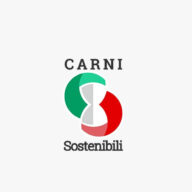
Health, safety, environment: why we need Sustainable Meats
The growing awareness towards food sustainability, and in particular that of meat and cured meats, leads to increase the attention ever more to the elements that define the main features: health, safety, production respectful of the environment as well as economic viability for businesses and consumers.
Talking about nutrition means discussing both the theme of consumption and of the nutritional value of meat and cured meats in people’s diet. With regards to consumption, there is no doubt that the growth of the world population, expected to be 9 billion people in 2050, compared with 7 billion today, will inevitably result in an increased demand for food, especially animal protein, for which there is expected an increase in demand of about 60% (Source: FAO).
In assessing the current level of meat consumption worldwide it is not the absolute value that should make us reflect but rather the extreme difference between pro capita consumption in the various areas of the world, with values ranging from about 120 kg/year in North American countries to less than 40 in Asia and Africa. This variability is critical because all the recent considerations regarding the alleged diseases and the environmental impacts associated with meat consumption should be measured by the real local scenarios.
Regarding the nutritional issue in a strict sense, science has however identified very clearly what the nutritional value of meat is and of the micronutrients contained in them. What is not so clear instead are the associations, assumed by some studies, between meat consumption and the onset of certain diseases such as cancer. In both cases, the most certain conclusion is that a balanced diet, consistent with the Mediterranean Diet, that proposes a moderate consumption of meat represents an adequate nutritional model, capable of delivering all the necessary nutrients to our body without risks to health.
In addition to being nutrient, food should also be safe. The quality and food safety, in Italy as well as throughout the European Union, are based on a strategy that foresees the prevention of any risk to consumer health all along the production chain. Regarding the issue of security it is also important to dispel some false stereotypes, such as those relating to the systematic use of hormones and antibiotics in livestock: in fact hormones have been banned in the whole of Europe for decades, while antibiotics are permitted only under strict veterinary control and following strict administrative protocols, designed to avoid, on the one hand the presence of antibiotic residues in meat, and on the other, the onset of possible phenomena of antibiotic-resistance.
The issue of security is closely linked to that of animal welfare. Maintaining in animals a state of good physical and mental health is an indispensable prerequisite to ensure their sustainable livelihoods, but is also a crucial element in ensuring the safety of foods derived from them. The evolution of public awareness has meant that, since the 80s, this issue is fully covered by legislation, establishing minimum conditions of well-being that must be respected: in many cases a violation of these rules is considered a criminal offense in Italy.
That of respect for the environment is one of the latest issues that is faced when it comes to talking about food; with regards to meat and cured meats it is also one of the most controversial because these products are characterised by a higher impact per kg: but limiting oneself to just this data, you lose however some very important aspects.
The first is that the analysis per kg does not take into account the actual consumption of food. If environmental impacts are related to the reduced weekly servings recommended by nutritionists, in fact, it can be seen how in a balanced diet the impacts of meat and cured meats are not as high as would be supposed by the analysis of data per kg. This message is the basis of the Environmental Hourglass, the communication symbol of the entire Sustainable Meat Project.
The second refers to the deep integration of animal husbandry in the whole agri-food sector, which through multiple and continuous exchanges of raw materials and resources makes the various systems (agricultural and livestock) more efficient and sustainable from an economical point of view.
In fact the pursuit of economic sustainability is one of the objectives to be pursued in order to reduce the risk of abandonment of the countryside by farmers. To such an end, the tendency is increasingly widespread of small operators to aggregate into cooperatives or into small and large industries. This permits them to optimise costs and especially to access advanced technological systems that allow the increase in productive efficiency, with a consequent saving of resources and reduction of the environmental impact.
A similar form of “efficient farming” should be seen in a positive way, because it is one of the ways to meet the challenge that is the basis of sustainability: “produce more to meet the needs of a growing number of inhabitants of the planet, consuming fewer resources”.
The Sustainable Meat Project





